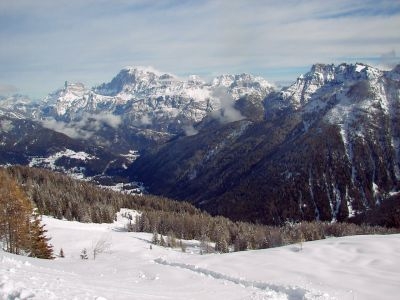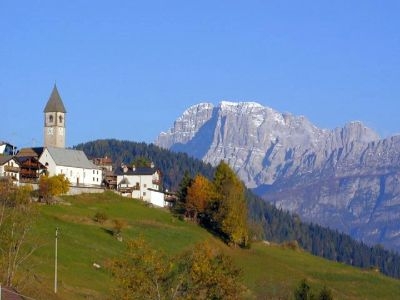



The Biois Valley became a tourist destination, although not in the modern conception, in the second half of the Nineteenth Century, when in the small village Canale d'Agordo a new hotel "Al Gallo" was opened, the first of the entire valley. Some of the most famous pioneers of the Dolomites used to spend their stay here: Francis Fox Tuckett (vice president of the English Alpine Club), John Ball (a political and naturalist, as well as the first mountaineer to climb Mount Pelmo), the geographer Giovanni Marinelli and the alpinist Alfred Von Radio-Radiis.
In the subsequent years the Biois Valley established itself as a tourist destination both for summer and winter, and it is still nowadays a main destinations for lovers of mountain.
The villages located in this Valley are the following: Falcade (1,200 m), Agordo (976 m), Vallada Agordina (1,036 m) and Cencenighe Agordino (773 m).
Falcade is a renowned tourist resort with the ski area of San Pellegrino and its beautiful and scenic slopes in winter, and the evocative walking and hiking trails in summer.
Canale d' Agordo is the birthplace of Albino Luciani, Pope John Paul I, and has a high historical and cultural interest, with the ancient Church Pievanale and the first brewery in Italy, founded in 1897. From this town another valley, Valle di Gares, is a suggestive glacial valley, from which several excursions brench out and where, in winter, there is a famous cross-country ski track.
Vallada Agordina, the third town, is composed of several hamlets, all very beautiful and characteristic. Here there is also the Church of St. Simon, which in the past was the cultural reference point of the entire valley and in 1877 it was declared a national monument.
At the end of the valley we find Cencenighe Agordino. This small town is located where the Biois flows into the Cordevole river. Due to this position Cencenighe was struck by several floods in the past and in particular, during the tragically famous flood of 1966, it was one of the most damaged towns.